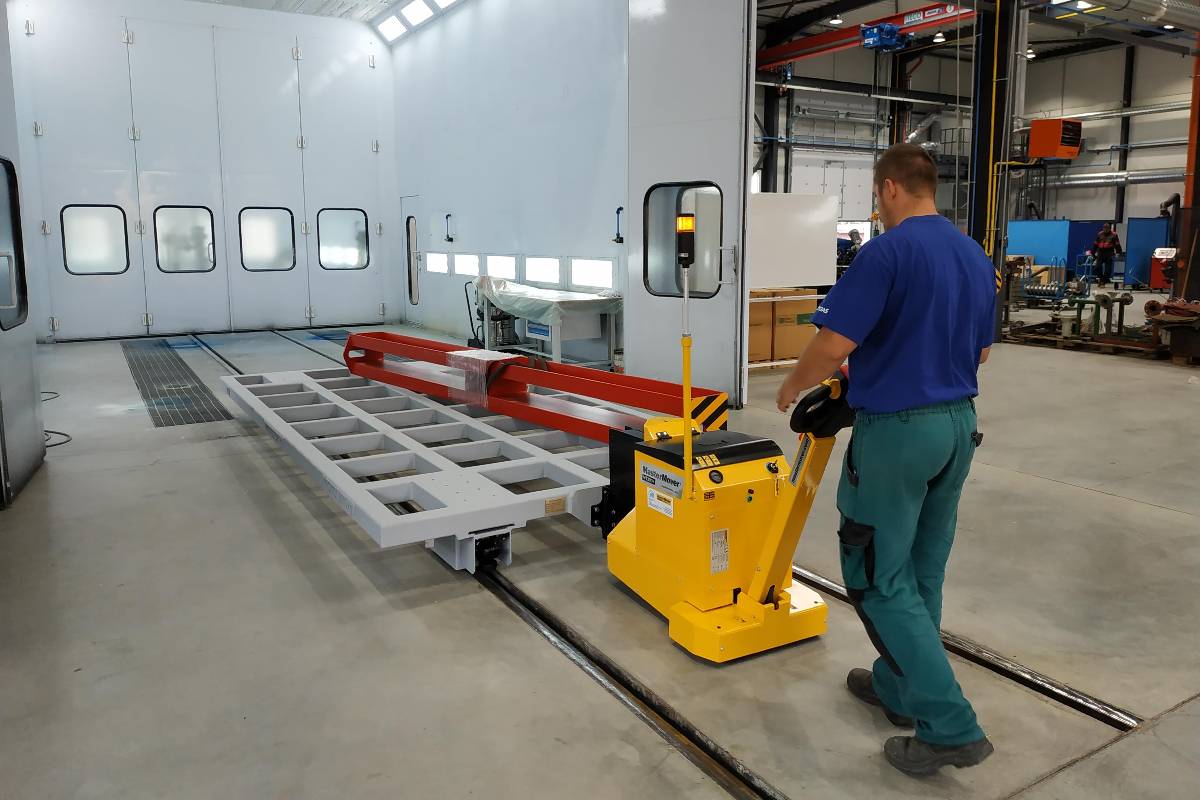How Does An Electric Tugger Work?
Material handling electric tuggers
Thank you for submitting your consultation request.
A member of the team will be in touch shortly.

How does an electric tugger work?
A real-world comparison
In its most simplistic form, the operation of an electric tugger works in the same way as an electric car.
Like an electric car, an electric tugger is charged via a cable and powered by energy stored within rechargeable batteries.
When the throttle is pressed it sends a signal to the motor to rotate, in the same way that the accelerator pedal on an electric car works. To facilitate this rotation, the motor draws current from the batteries, which then power the motor which in turn, provides the drive.
An electric tugger also uses a similar regenerative braking mechanism to that which can be found in most electric vehicles. Regenerative braking converts kinetic energy – from movement – into electricity, which is then fed back into the battery.
How do electric tuggers generate traction?
Electric tuggers are designed to improve the movement of heavy-wheeled loads. The way they generate traction typically determines whether they are classed as ‘electric tuggers’ or ‘electric tows’.
A weight transfer system
Electric tuggers use the weight transfer principle: A secure coupling system enables an element of the load weight to be transferred through the machine drive wheel to gain traction and mobilize heavy loads.
Using the machine weight
Electric tow tugs use their own weight: The tow tug utilizes its’ own weight to gain traction and enable the movement of heavy loads.
What is the difference between towing and tugging forces?
Aside from the differences between how electric tuggers and electric tows generate traction, it’s important to understand the differences in their operation.
An electric tugger delivers equally matched push and pull forces (the force a machine can pull or push) and provides a solution that enables full manipulation and maneuverability of heavy loads in any direction.
On the other hand, electric tows typically have a greater pull force than push. Electric tows can also push loads – but pushing requirements must be talked through with your chosen supplier to make sure the movements you need are feasible with a tow, and the correct coupling and other options have been selected.
How does the coupling system work?
For electric tugs, the coupling systems and connection points need to be able to facilitate weight transfer. To do so, any connection point needs to be rigid to allow the machine to move heavy weights.
Typically, this utilizes a female coupling (securely mounted on your load) and a corresponding male coupling (mounted on the machine). Operators then engage the hydraulics on the electric tugger to facilitate a secure and rigid connection to your load.
Electric tow tugs however utilize a simple plug-and-play design that uses traditional towing couplings to connect to your load – such as drawbars, tow pins and ball hitches.
Your questions, answered - FAQs
No, an electric tugger does not lift the load clear off the ground. Electric tuggers are designed to keep wheeled loads safely on the ground.
Electric tuggers and tow tugs are typically pedestrian operated as standard. However, as the technology in the industry has evolved, electric tuggers are available with additional options such as: Remote control operation and Autonomous operation (AGVs)
Remote control operation
This allows electric tuggers and tows to be operated via a remote control. Enabling operators to have an ideal vantage point when moving the load and benefit from unrivaled visibility.
Autonomous operation (AGVs)
Automated Guided Vehicles (AGVs) are of increasing interest to businesses looking to streamline operations and maximize efficiency. Electric tuggers are available as line-follow systems or as fully autonomous machines that can interact with their environment and systems.
The ultimate guide to electric tuggers
Electric tugger essentials
Looking to understand electric tuggers in a little more detail?
We’ve compiled some helpful resources to get you started, covering everything from how they work, different types of batteries, getting the right connection point and more…
-
What is an electric tugger?
-
5 benefits of electric tuggers
-
Do you need a license?
-
Batteries & charging guide
-
Couplings & connections
-
Castor wheel explainer
-
Frequently asked question
-
Why businesses use electric tuggers
-
Pedestrian operated vs remote control
-
Automation & remote control options
-
Tuggers vs tows
-
Pricing guide
-
Walkie tuggers
An electric tugger solution for your application
Whether you are looking to reduce downtime on an assembly line or remove manual handling processes for staff, electric tuggers and tows deliver a compact, powerful, and easy-to-use solution.
We're here to help
If you’re looking to improve safety, remove the risk of injury and unlock greater operational efficiency, we’re here to help. Speak to our team to discuss your application.